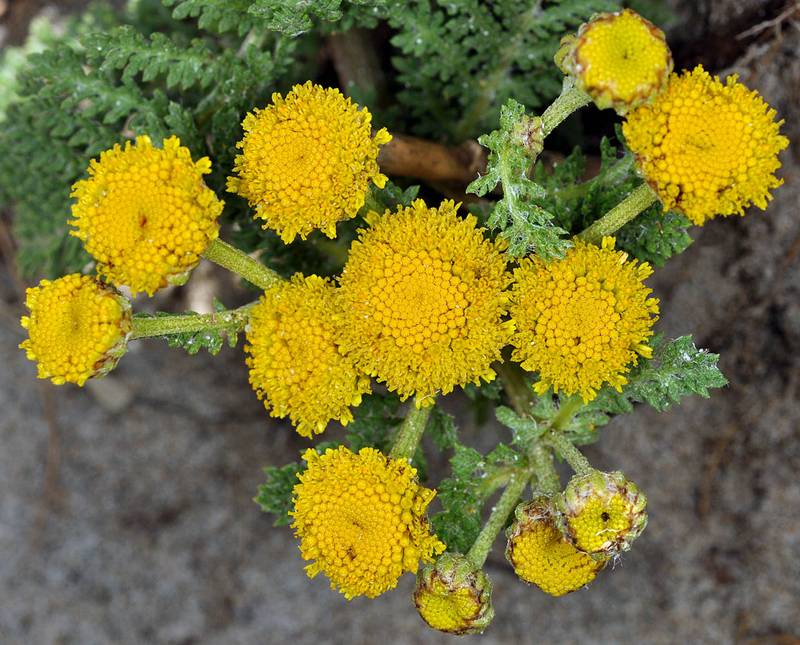Tanacetum bipinnatum
Tanacetum balsamita
camphor tansy, dune tansy
costmary
Basal leaves well developed and larger than the cauline leaves or wanting;
cauline leaves 5-20 cm. long, bi- or tri-pinnatifid, the ultimate segments blunt or rounded.
Basal leaves elliptic or broadly oblanceolate with rounded teeth, the blade 10-25 cm. long and 2.5-8 cm. wide, with a petiole of similar length;
cauline leaves smaller and sessile;
leaves silky when young, becoming glabrate.
Heads several in a short, flat-topped inflorescence;
involucre bracts dry, imbricate, the margins and tip scarious; disk 8-15 mm. wide;
rays yellow, pistillate, short, barely surpassing the marginal disk flowers;
disk flowers yellow, perfect, with 5-lobed tubular corolla;
pappus a minute crown.
Basal leaves elliptic or broadly oblanceolate with rounded teeth, the blade 10-25 cm. long and 2.5-8 cm. wide, with a petiole of similar length;
cauline leaves smaller and sessile;
leaves silky when young, becoming glabrate.
Achene 5-ribbed, glandular.
Achenes sub-terete, 10-ribbed.
Tanacetum bipinnatum
Tanacetum balsamita
- Local floras:
BC,
CA,
OR,
WA
- Local Web sites:
CalFlora,
CalPhotos,
Flora NW,
PNW Herbaria
WildflowerSearch
iNaturalist (observations)
USDA Plants Database
- LBJ Wildflower Center
- SEINet
- Plants of the World Online
- Encyclopedia of Life
- Wikipedia
- Google Image Search



